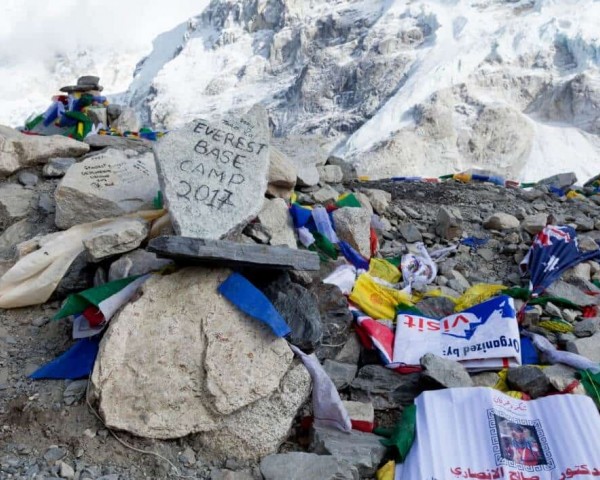Rubbish is increasingly common on Everest, the highest peak in the world, symbolizing the achievement of everyone who reaches its summit. However, a hidden concern is the harmful environmental impact generated by mass tourism.
Each year, approximately 80,000 people visit Sagarmatha National Park, where Mount Everest is located. This influx results in about 200 tons of waste on Everest annually, including organic waste, plastics, paper, glass, and other materials that overwhelm local communities’ waste management capabilities. Therefore, urgent measures are needed to address this issue and reduce its impact, with clean technologies being a crucial part of the solution.
Waste on Everest: The Challenge of “Cleaning” the Mountain
The rise of mass tourism in an area that was once an exclusive destination for seasoned mountaineers is leading to significant waste management challenges. At nearly 8,900 meters above sea level, the altitude and terrain complicate the efforts to address this issue.
One practical approach to tackling the problem is to use advanced technologies to measure the current amount of waste, which can aid in its collection. According to the annual report from the local NGO Sagarmatha Pollution Control Committee (SPCC), during the spring 2022 expeditions to Mount Everest, Lhotse, and Nuptse, 44,713 kilograms of waste were managed in the base camps alone.
This waste includes food wrappers, clothing, bottles, oxygen tanks, batteries, and tents that visitors consciously leave behind. Additionally, organic waste generated each climbing day adversely impacts the ecosystem.
The rapid increase in tourism has posed significant challenges for adapting waste management systems to meet the rising demand. In response, the Government of Nepal has initiated awareness campaigns and clean-up efforts, many of which are organized by the SPCC.
The NeverRest Project
Faced with this growing issue, The NeverRest Project was established. This initiative combines engineering and technology to provide sustainable solutions to reduce tourism’s environmental impact on the highest mountain in the world.
The most polluted area is Camp 4, located at 7,900 meters, where it is nearly impossible to collect the waste generated due to safety hazards. Additionally, there is the Gorakshep landfill, which is hidden from view and represents another significant problem, as it is where most of the waste and feces from expeditions are disposed of.
Waste on Everest: How Can the Situation be Fixed?
In 2023, an organization introduced the first Everest Sustainable Base Camp, implementing a set of innovative solutions aimed at reversing the environmental problems on the Nepalese side of Mount Everest. This initiative is the culmination of two years of hard work involving both international and Nepalese engineers, environmental scientists, and mountaineering experts.
Like many mountains worldwide, Everest has suffered from the accumulation of garbage, which pollutes water sources and rivers. This pollution negatively impacts wildlife, crops, and the health of local communities. A 2019 expedition to Mount Everest discovered traces of microplastics in the water and snow, raising voices about their potential effects on human health.
The project encompasses various actions designed to improve resource management and raise awareness. One notable feature is a prototype for an extensive topographic analysis of the Everest base camp area, enabling the assessment of factors such as the distribution of expedition operators and the evolution of the Khumbu glacier, among others. Among the solutions proposed by ‘The NeverRest Project’ are a portable urinal and an artificial glacier.












